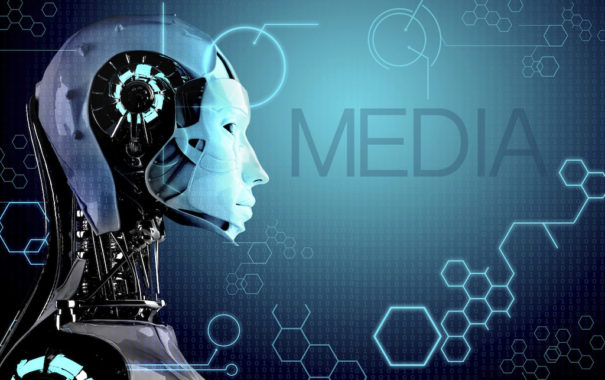Listos o no, la Inteligencia Artificial ha llegado
El potencial de la Inteligencia Artificial para, básicamente, revolucionar y optimizar los procesos en el sector de media es prácticamente ilimitado. Solo es cuestión de tiempo que la IA esté tan arraigada como la IP o las soluciones digitales en el flujo de trabajo de producción del sector broadcast en la actualidad.
La Inteligencia Artificial (IA) existe desde hace décadas. Desde asistentes virtuales en nuestros teléfonos inteligentes y transacciones automáticas en servicios financieros hasta aplicaciones en el espacio de defensa, la IA se extiende con rapidez por los diferentes sectores. La industria de media no es ninguna excepción. Solo es cuestión de tiempo que la IA esté tan arraigada como la IP o las soluciones digitales en el flujo de trabajo de producción del sector broadcast en la actualidad.
No obstante, a pesar de que parece existir una opinión unánime en cuanto al potencial de la inteligencia artificial y la certeza de que se adoptará en las empresas, todavía sigue debatiéndose una definición consensuada sobre en qué consiste la IA.
Por un lado, está la idea de automatización que, como su nombre indica, consiste en automatizar procesos de un sistema sin la intervención humana. Al mismo tiempo, se habla de aprendizaje automático, que podría considerarse una evolución de la automatización. Este concepto hace referencia a aquellos sistemas con capacidad para aprender de manera automática y mejorar a partir de la experiencia sin que tengan que estar específicamente programados para ello.
También está el análisis de datos, que hace referencia al proceso de examinar grandes conjuntos de datos con el fin de descubrir patrones, tendencias de mercado, correlaciones o cualquier información útil oculta a simple vista. Una aplicación final pero también relacionada de la IA sería el análisis predictivo, en el que se extrae información a partir de grandes conjuntos de datos con el objetivo de detectar patrones y predecir futuras tendencias y resultados, así como proponer recomendaciones.
Las definiciones abarcan muchas ideas en relación con el procesamiento robótico. No obstante, no debe confundirse la automatización con la IA, al igual que esta no debe considerarse una manera de «deshacerse de trabajadores». De acuerdo con José Antonio Bolós, Sales Manager de Sony Europe, “La IA es un pilar fundamental para un futuro en el que el aprendizaje profundo sea el protagonista y la información se use para lograr una mayor eficacia”.
El panorama actual de la IA
Actualmente, según los datos de una encuesta reciente a usuarios finales de IABM, la inteligencia artificial se encuentra al comienzo de su curva de adopción en el sector de media. Solo el 8 % de los compradores de tecnología multimedia reconocieron haberla adoptado antes de septiembre de 2017. Alrededor del 36 % afirmó que no era probable que fueran a adoptarla, mientras que el 56 % expresó que probablemente lo hicieran en los próximos 2 o 3 años. Otra encuesta ha revelado que dos tercios de las empresas que han probado la IA han introducido esta tecnología en al menos una función crítica de su flujo de trabajo.
La IA se abre camino incesantemente en los flujos de trabajo de producción de los medios, donde está llevando a cabo costosas tareas tales como subtitulado, el etiquetado de metadatos y la generación de clips para redes sociales. Para muchos, la motivación principal para adoptar la tecnología de IA es la oportunidad de automatizar flujos de trabajo rutinarios que se llevan a cabo de forma manual.
Es posible que la adopción todavía sea relativamente lenta; sin embargo, hay algo que está claro: las tecnologías de IA han venido para quedarse. La cuestión no debería ser si vamos a utilizar la IA, sino más bien cómo vamos a integrarla en lo que hacemos actualmente, desde el comienzo de la producción hasta la emisión final del contenido.
 Donde reside la magia
Donde reside la magia
Las expectativas de los clientes son mayores que nunca. Además, tampoco parecen disminuir las exigencias hacia las compañías del sector de de media para ofrecer servicios más completos y personalizados en un mercado en constante cambio. Entre ellas, cabe destacar las recomendaciones personalizadas sobre qué debería verse, la duración del contenido o cómo se adapta este en sí a sus necesidades.
Uno de estos factores es la complejidad de la red, que está llegando a tal punto que los humanos no pueden hacerle frente. La única manera de desarrollar la capacidad para emitir vídeos a gran escala, por ejemplo, es dar una mayor importancia a la computación: pasar de las redes de difusión sencillas y los contenidos en caché a hacer que la inteligencia esté a la vanguardia de manera estable.
De manera similar, la IA también tiene una función a la hora de atenuar la enorme complejidad de la programación. Pueden pasar hasta 18 meses desde el nacimiento de una idea creativa hasta que se emite un programa, tiempo durante el cual el ambiente en el que se está emitiendo el programa puede haber cambiado de manera drástica. Una forma de garantizar que el contenido mantenga su relevancia es utilizar la inteligencia artificial para ayudar a fomentar y utilizar el análisis de datos complejos con el fin de impulsar mejores decisiones de cara al futuro.
Seguir el ritmo a los servicios de streaming
Competir contra presupuestos prácticamente ilimitados como los de Netflix o Amazon Prime es un reto al que se enfrenta cualquiera que trabaje en el ámbito de los contenidos. Las cadenas deben empezar a aprovechar sus puntos fuertes, y los datos heredados forman parte de su arsenal. Es posible analizar enormes cantidades de datos y utilizarlos para predecir programas populares, cuál es el mejor momento para aumentar los índices y muchos otros factores que deberían tenerse en cuenta a la hora de crear un programa y emitirlo para la audiencia adecuada en el momento adecuado.
Recurrir a los metadatos es el camino para conseguir un entorno más completo para las audiencias. Las empresas deberían utilizarlos para obtener de forma progresiva un panorama de los datos en función de lo que desee la gente en lugar de ofrecer demasiados contenidos a las audiencias para hacer cálculos. Se trataría de describir lo que aparece en el programa y los elementos importantes de este, es decir, hacer que los metadatos semánticos estén a disposición de las personas, de manera que puedan dirigirse hasta ese elemento si así lo desean. La cuestión es crear un panorama de los datos de forma progresiva en función de los deseos de la gente y utilizar esto para impulsar una experiencia de visualización más familiar. Héctor Sierra, Sales Manager de Sony Europe, matiza que “solo mediante esta perspectiva la IA se vuelve realmente inteligente y ofrece beneficios reales tanto a empresas como a usuarios finales”.
Lo mismo ocurre con las empresas mediáticas. Si la IA puede respaldar el proceso de producción de informativos al crear y distribuir noticias con más rapidez, entonces se convertirá en un activo real para estos sectores, en los que el tiempo resulta crítico. Esto es posible por medio de aplicaciones como las de reconocimiento de voz, reconocimiento facial o correcciones de edición.
El potencial de la IA para, básicamente, revolucionar y optimizar los procesos en el sector de media es prácticamente ilimitado; por ello, su valor es indiscutible. Invertir en IA en su forma más pura significa olvidarse de preocupaciones relacionadas con los cambios en los empleos. En su lugar, permite centrarse en las oportunidades que ofrece tener más expertos en la materia para desarrollar y trabajar con un sistema informático con el fin de obtener una mejor información, necesaria para crear y emitir los contenidos que desea la gente en el momento que prefieran.
Es el momento de adoptar activamente las tecnologías de IA y adelantarse a los acontecimientos.
Stuart Almond
Responsable de marketing y comunicaciones de Sony Europe
Did you like this article?
Subscribe to us RSS feed And you will not miss anything.

















